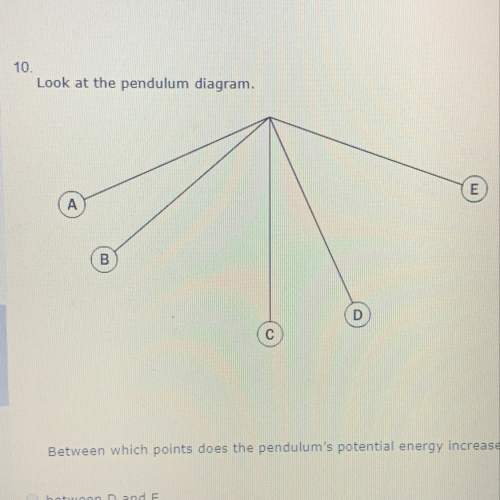

Answers: 2
Other questions on the subject: Physics

Physics, 22.06.2019 05:20, lea5261
Which statement is true? a. kepler's laws apply only to the motion of earth. b. kepler's laws can be used to predict eclipses. c. kepler's laws are true for a central force that is directly proportional to distance. d. kepler's laws can be deduced from newton's laws of motion and gravity.
Answers: 2

Physics, 22.06.2019 12:30, fernandoluvsmom
What would be the strength of earth's gravitational field at a point where an 80.0 kg astronaut would experience a 80% reduction in weight
Answers: 3

Physics, 22.06.2019 23:40, redraider4915
Certain bacteria (such as aquaspirillum magnetotacticum) tend to swim toward the earth’s geographic north pole because they contain tiny particles, called magnetosomes, that are sensitive to a magnetic field. if a transmission line carrying 100 a is laid underwater, at what range of distances would the magnetic field from this line be great enough to interfere with the migration of these bacteria? (assume that a field less than 5% of the earth’s field would have little effect on the bacteria. take the earth’s field to be 5.0 * 10-5 t, and ignore the effects of the seawater.)
Answers: 1

Physics, 23.06.2019 03:00, kayla6653
Suppose the house in question 3 is located in cleveland where the annual average solar flux is 160 w/m2 . if 10 m2 of solar panels operating at 20 percent efficiency were installed on this house to collect and store solar energy in the form of hot water:
Answers: 2
Do you know the correct answer?
Please i need help
A 12 kg ball (ball #1) moves rightward at 4.000 m/s. It strikes a ball (ball #2...
Questions in other subjects:
















